In this article I will walk you through my process for improving Google's Quality Score for AdWords. I'll also share some tips and tricks for completing a restructure for large accounts.
Quality Score - It's that mysterious metric that continues to elude our understanding. Maybe that is a little dramatic, but it can be frustrating when you know your keywords are highly relevant and yet they continue to maintain low Quality Scores. If this is the situation that you find yourself in, perhaps you will find this article helpful.
What is Google Quality Score (QS)?
According to Google: "The 1-10 Quality Score reported for each keyword in your AdWords account is an estimate of the quality of your ads and landing pages triggered by that keyword. Having a high Quality Score means that Google thinks your ad and landing page are relevant and useful to someone looking at your ad."
Why is Quality Score important?
- Ad Position: Having a high QS makes it easier and cheaper for your ads to appear in top ad positions.
- CPC (Cost-per-Click): Generally results in lower average CPCs
- Ad Extensions: Some Ad Extensions require a minimum QS to be displayed.
Ok, so how can you improve this Quality Score thing? I recently asked myself this question in regards to a group of campaigns in which the majority of keywords had a low QS. I took a step back to analyze and ultimately restructure the campaigns. After a complete restructure of the campaigns, below are my results. (The restructured campaigns were launched on 11/15.)
- % of Poor QS Keywords decreased from 60% to 35%
- % of Good QS Keywords increased from 40% to 65%
- Click volume maintained
- CTR improved from 1.9% to 3.1%
- Avg CPC improved from $10.66 to $9.10
To achieve these results I focused on the following areas:
- Keyword Selection
- Campaign & Ad Group Structure
- Ad Copy / Keyword Correlation
Keyword Selection:
Step 1:
The first step in this restructure process is to analyze search query data by running a Search Terms Report. This report allows you to see the actual user searches that matched to the keywords that you are bidding on. Using this data I identified the following:
- Most common "User Intent Modifiers": These are words or phrases that indicate the action the user wants to take. ("purchase", "buy", "get", "learn about", "acquire", "steal", etc)
- Most common "Product Description Variations": These are words or phrases that describe the product or service that you are selling. (For example if you sell pants, some product description variations could be: "trousers", "slacks", "knickers", etc.)
- Most common "Product Description Modifiers": These are words or phrases that describe specific attributes of the product that the user is looking for. ("blue", "green", "large", "small", etc.)
- Other common "Modifiers" that apply to your business: For example, geographic state modifiers applied to the campaigns that I restructured. ("in new york", "in california", "in connecticut", "in ny", "in ca", "in ct", etc.)
Step 2:
Next, you'll want to combine the "Product Description Variations" with the "Modifiers" that make sense.
If there are Product Description Variations or Modifiers that do not make sense for your business or conversion goals, those should be added as negative keywords. For example if your conversion goal is purchases and you've identified the most common "User Intent Modifiers" as "purchase", "buy", "get", "learn about", "acquire", "steal" then you will want to add "learn about" and "steal" as negative keywords.
To combine the relevant terms, I use a simple keyword matrix in excel which allows you to combine a large number of terms quickly.
- Enter the following formula in the yellow cell: =C$3&" "&$B4
- It is important to include the $ symbol in front of the value that you do not want to change when you drag the formula to other cells.
- Populate all of the empty cells with this formula.
- Assign an Ad Group name to the keywords you've created.
- In this example, we end up with just one keyword per Ad Group. This is okay, in fact it is ideal. But including 5 - 10 highly related keywords within an Ad Group is also okay. The key here is to ensure the keywords are highly related.
- Repeat this process to add in the other "Modifiers".
- Manipulate the formula to create keywords with terms in various word order.
Step 3:
Once you have your keyword set built out add Exact and Phrase Match versions of all keywords.
Then, add Modified Broad Match versions of keywords. You will not need to add Modified Broad Match versions of all keywords. For instance, the Modified Broad keyword "+buy +large +blue +pants" will capture the same searches as "+buy +blue +pants +large".
You can easily add in the Modified Broad symbol "+" using the following excel trick.
- Select the cells where you'd like to add the Modified Broad symbol.
- Use "Find and Replace" (Ctrl + f)
- In the "Find what" field enter one space
- In the "Replace with" field enter one space and "+". Select "Replace All"
- Enter the following formula to add the "+" to the beginning of the keyword: ="+"&B3
Campaign & Ad Group Structure:
Group your Ad Groups / Keywords into Campaigns by match type. Typically, Exact Match keywords perform better than Phrase Match and Phrase Match performs better than Broad Match. Because of this, Exact Match keywords should receive maximum exposure followed by Phrase Match. Creating separate campaigns for each match type allows you to easily control where your budget flows. If you need to reduce spend, you can reduce the budget of the Broad Match campaign first followed by the Phrase Match campaign, ensuring Exact Match does not miss out on traffic.
Of course it is very possible that your Broad or Phrase Match campaigns perform better than Exact. In any case, you will want to direct your budget to the best performing campaign and reduce the lowest performing campaign first.
Ad Copy / Keyword Correlation:
The next step is to create ad copy that is super correlated to your keywords. The naming convention that I've used for my Ad Groups is as follows:
- Product Variation_Product Modifier_User Intent Modifier
This format allows me to easily identify the specific terms that need to be included within the ad copy. Using the following template makes creating ad group specific ad copy much easier, especially for large accounts.
- Select the cells within the Ad Group column
- Select "Text to Columns" function
- Separate the data using the delimiter "_"
- Use the following formula to create the Headline: =F3&" "&E3&" "&D3&" "&C3
- Populate cells in the Headline column with formula
- Remove a Product Modifier or otherwise adjust the headline to ensure it is within the character limit.
Use the following formulas to create Description Line 1:
- ="Designer "&D3&" "&C3&" in "&E3&" Sizes."
- ="Designer "&D6&" "&C6&" in Size "&E6&"."
- =D9&" "&C9&" in "&E9&" Sizes."
- Modify the formula to ensure it is within the character limit.
- If possible, always include a punctuation mark at the end of Line 1. This makes Line 1 eligible to appear next to the Headline, making your ad stand out.
Use the following formula to create the Description Line 2:
- ="Starting at $25. "&F3&" Online Today."
Modify the formula to ensure it is within the character limit.
Use the following formula to create the Display URL:
- ="AwesomePants.com/"&D3&"-"&C3
After completing this process all factors that affect Quality Score and can be manipulated through AdWords have been tackled:
- The keyword set is highly relevant to how in-market users are searching for your product or service.
- The Ad Copy is jam packed with super correlated keywords specific to every Ad Group.
- Campaigns are structured in a manner that ensures maximum visibility to the most relevant keywords.
Achieving this level of granularity can be a daunting project, especially when it comes to some of those large accounts out there. It is going to be a very time consuming process, but focusing your efforts on improving Quality Score is essential to the success of your AdWords campaigns. While there is certainly nothing ground breaking in this article, hopefully you are able to take away some tricks to help make this process a little more efficient and less overwhelming.


-1.jpg?width=300&name=rendered%20(5)-1.jpg)
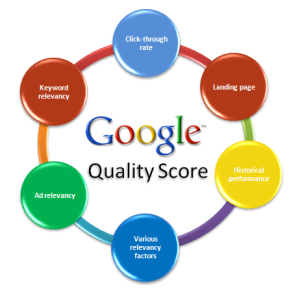
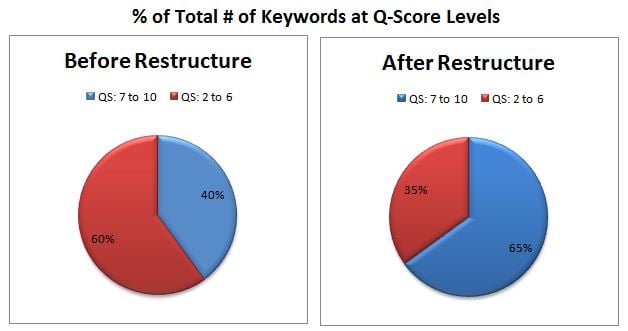
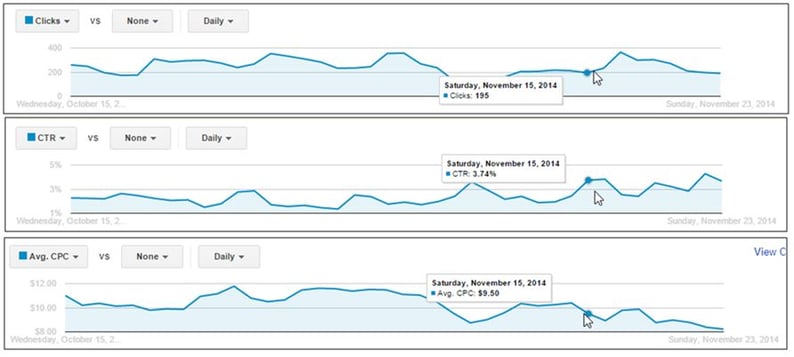


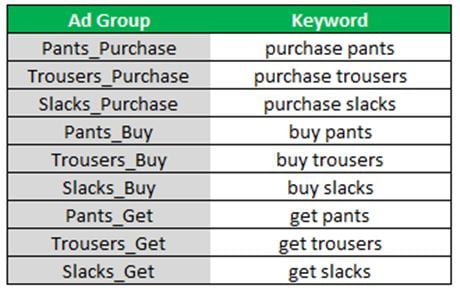


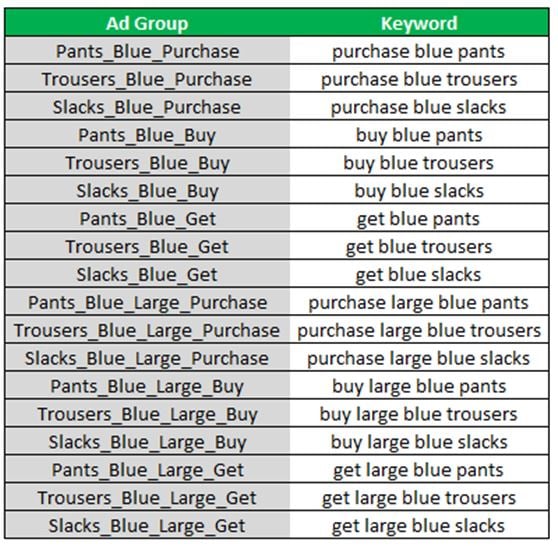

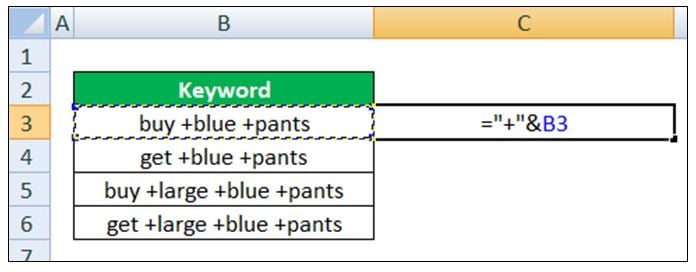
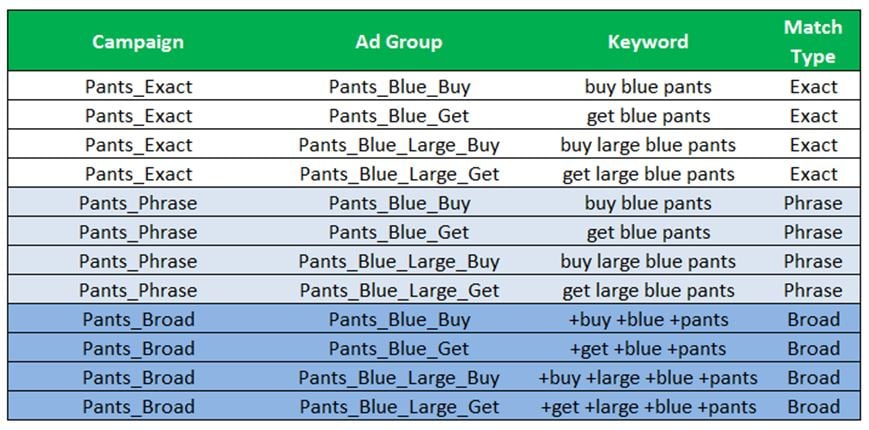
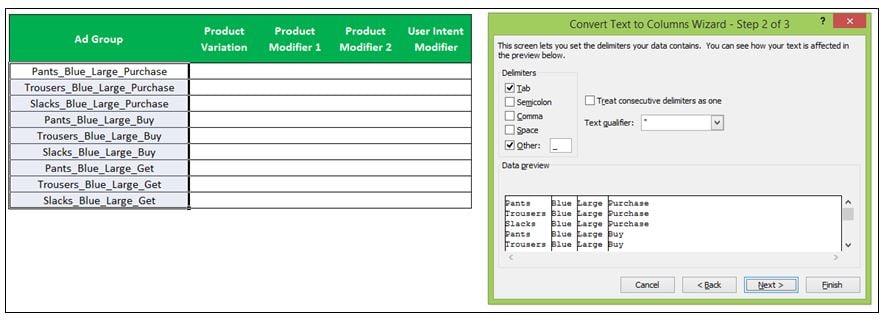
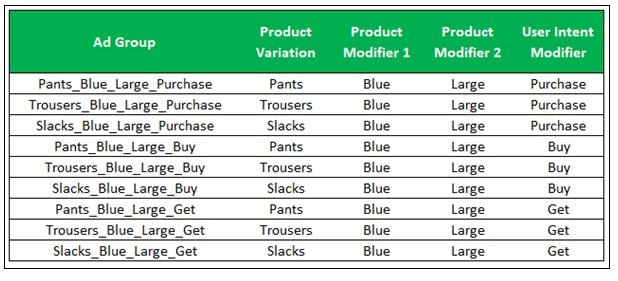








COMMENTS